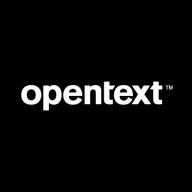

Mend.io and OpenText Static Application Security Testing compete in the realm of security solutions. Mend.io appears to have an advantage in integration capabilities and ease of use, whereas OpenText is recognized for its extensive vulnerability management.
Features: Mend.io offers detailed open-source dependency analysis, vulnerability alerts, and CI/CD pipeline integration, along with policy automation and inventory management for quick vulnerability identification. OpenText facilitates comprehensive vulnerability detection across multiple languages and supports robust project tracking and compliance, aiding in open-source licensing management.
Room for Improvement: Mend.io could expand language support and refine reporting features, with a need for improved automation to reduce manual tasks. OpenText users point to false positives and wish for enhanced integration tools, with a need for stability improvements in browser compatibility and performance.
Ease of Deployment and Customer Service: Mend.io is compatible with public and hybrid clouds and integrates smoothly with developer workflows; it is lauded for strong customer support. OpenText prefers on-premises and hybrid cloud deployments, but lacks a modern deployment approach. Both offer excellent customer service, though Mend.io is noted for its proactive support and dedicated customer success management.
Pricing and ROI: Mend.io is known for its competitive pricing and flexible model, delivering strong ROI through efficiency and security improvements. However, users express some concern over potential price increases. OpenText can be expensive for smaller organizations but offers significant ROI through its robust vulnerability management and compliance features.
Mend.io has provided a good return on investment by significantly reducing vulnerabilities.
They prioritize providing the best experience to large organizations like ours, belonging to the Fortune 100.
I have noticed that the speed to respond has decreased over time.
Mend.io provides pretty good support.
The customer service and support for Fortify Static Code Analyzer are better than those for LoadRunner.
The technical support has been good because we always received answers to our questions.
Fortify Static Code Analyzer integrates well and is scalable.
Mend.io is very stable; we did not have any issues.
AI integration in code security tools like Mend.io is still in its early stages and relatively immature.
The stability of Fortify Static Code Analyzer is generally good.
I would rate the product stability as an eight.
That's not a limitation of Mend.io; I think that's a general problem with any tool in the market because no tool in the market will actually know what portion of the code I'm actually using from that particular library if it is vulnerable or not.
I strongly recommend that they start working with AI for the reporting part.
The actual challenge is how easy it is to integrate it in the early phase of the software development life cycle.
We are not ready to transfer our code without control to AI instruments.
While it includes all the OWASP top factors, AI has come into the picture, so those updates should also be considered.
It should be easier to install, perhaps through a container-based approach where everything is combined into one image or pack of containers.
The cost of Mend.io is competitive, being quite low compared to others.
My experience with the pricing, setup costs, and licensing has been good.
The pricing of Fortify Static Code Analyzer is good, with a flexible model that allows customers to choose a setup that suits their needs.
We find it 100% accurate in detecting vulnerabilities.
Mend.io is very efficient, highly efficient, and it is the best scanning tool for SCA.
Mend.io's reporting tools are beneficial for my use case; from a UI perspective and generation of reports, including the SBOM, it has the flexibility and is easy to generate and share with the developer teams.
Fortify Static Code Analyzer has the capability of giving fewer false positives compared to other tools.
The most impactful feature of Fortify Static Code Analyzer in identifying vulnerabilities is the ratio of total number of vulnerabilities to false positives.
The most valuable feature of Fortify Static Code Analyzer is its extensive language support, covering many languages from legacy ones to the newest.
| Product | Market Share (%) |
|---|---|
| OpenText Static Application Security Testing | 8.3% |
| Mend.io | 6.5% |
| Other | 85.2% |

| Company Size | Count |
|---|---|
| Small Business | 10 |
| Midsize Enterprise | 3 |
| Large Enterprise | 20 |
| Company Size | Count |
|---|---|
| Small Business | 4 |
| Midsize Enterprise | 3 |
| Large Enterprise | 11 |
Mend.io is a software composition analysis tool that secures what developers create. The solution provides an automated reduction of the software attack surface, reduces developer burdens, and accelerates app delivery. Mend.io provides open-source analysis with its in-house and other multiple sources of software vulnerabilities. In addition, the solution offers license and policy violation alerts, has great pipeline integration, and, since it is a SaaS (software as a service), it doesn’t require you to physically maintain servers or data centers for any implementation. Not only does Mend.io reduce enterprise application security risk, it also helps developers meet deadlines faster.
Mend.io Features
Mend.io has many valuable key features. Some of the most useful ones include:
Mend.io Benefits
There are many benefits to implementing Mend.io. Some of the biggest advantages the solution offers include:
Reviews from Real Users
Below are some reviews and helpful feedback written by PeerSpot users currently using the Mend.io solution.
Jeffrey H., System Manager of Cloud Engineering at Common Spirit, says, “Finding vulnerabilities is pretty easy. Mend.io (formerly WhiteSource) does a great job of that and we had quite a few when we first put this in place. Mend.io does a very good job of finding the open-source, checking the versions, and making sure they're secure. They notify us of critical high, medium, and low impacts, and if anything is wrong. We find the product very easy to use and we use it as a core part of our strategy for scanning product code moving toward release.”
PeerSpot reviewer Ben D., Head of Software Engineering at a legal firm, mentions, “The way WhiteSource scans the code is great. It’s easy to identify and remediate open source vulnerabilities using this solution. WhiteSource helped reduce our mean time to resolution since we adopted the product. In terms of integration, it's pretty easy.”
An IT Service Manager at a wholesaler/distributor comments, “Mend.io provides threat detection and an excellent UI in a highly stable solution, with outstanding technical support.”
Another reviewer, Kevin D., Intramural OfficialIntramural at Northeastern University, states, "The vulnerability analysis is the best aspect of the solution."
OpenText Static Application Security Testing empowers teams with efficient vulnerability detection and streamlined secure coding practices, offering comprehensive language support and seamless integration with development tools.
OpenText Static Application Security Testing enhances software security during development by accurately identifying vulnerabilities with minimal false positives. It integrates seamlessly with IDEs and CI/CD pipelines, making it highly efficient for early detection of security issues. Users benefit from its easy setup, clear documentation, and centralized portal for managing security findings. Despite facing challenges like high costs and complex configurations for certain languages, its role in facilitating compliance and streamlining secure coding processes is indispensable. Improvements are needed in areas such as outdated design, language support, and integration capabilities to meet evolving user expectations.
What features does OpenText Static Application Security Testing offer?Organizations across diverse sectors implement OpenText Static Application Security Testing primarily to secure applications during development phases. Its integration with tools like GitLab, Jenkins, and Azure DevOps ensures a robust security pipeline. By combining with Sonatype Nexus, secure code, and library management is achieved effectively.
We monitor all Static Code Analysis reviews to prevent fraudulent reviews and keep review quality high. We do not post reviews by company employees or direct competitors. We validate each review for authenticity via cross-reference with LinkedIn, and personal follow-up with the reviewer when necessary.